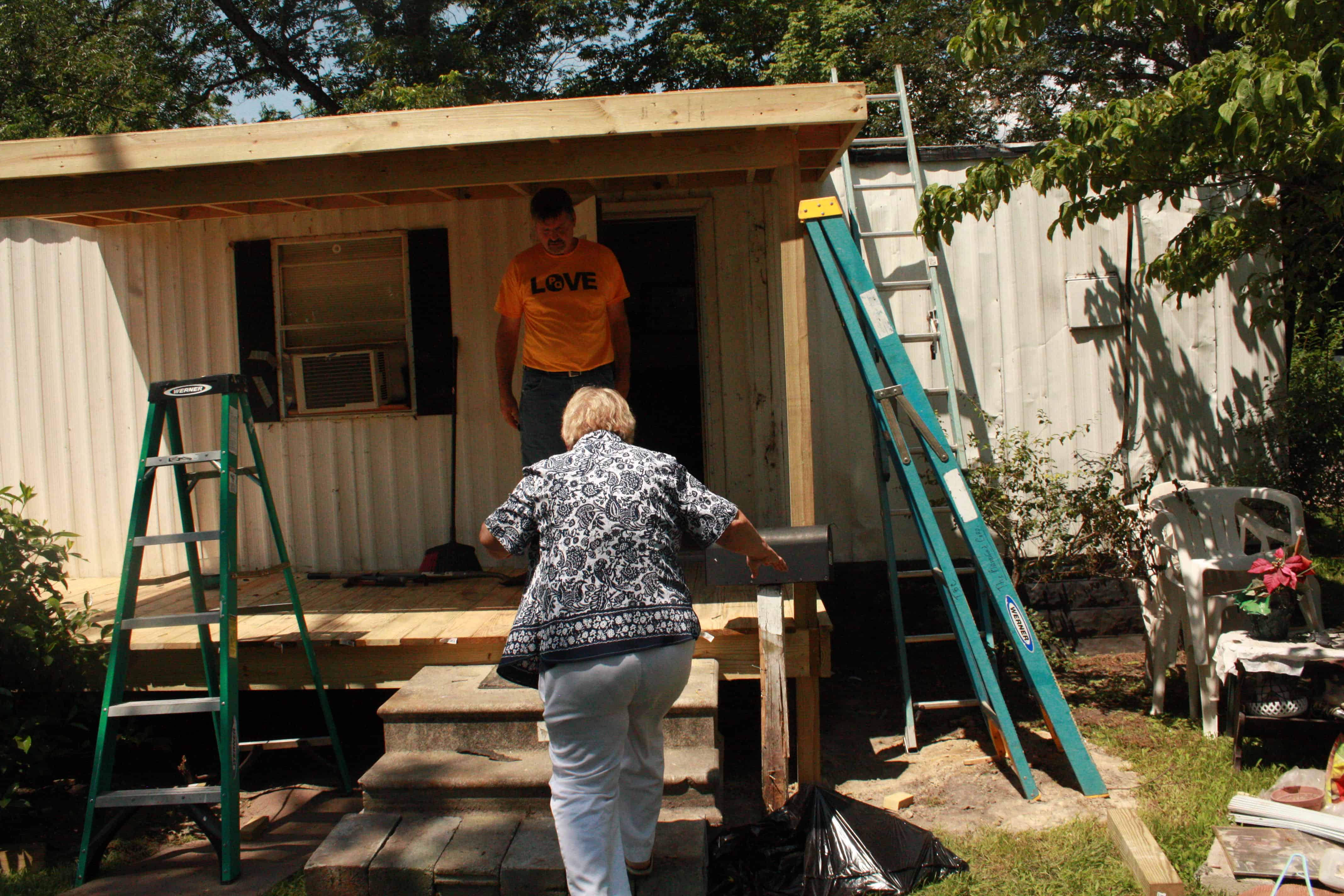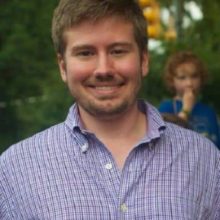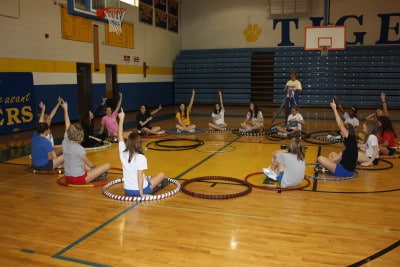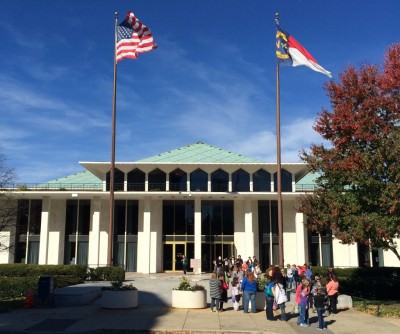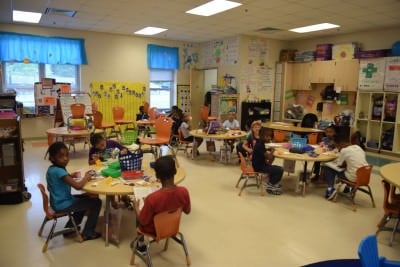What hope is there for young people who drop out, who are impoverished, who are unemployed, or who have been incarcerated?
I found hope for these youth in Hertford, a small town in the northeast corner of our state in Perquimans County. I went there to visit River City YouthBuild, a local chapter of a national organization that empowers economically disadvantaged young adults with education and job skills. They were in Hertford for a day of service in partnership with a local church to repair homes for people in need.
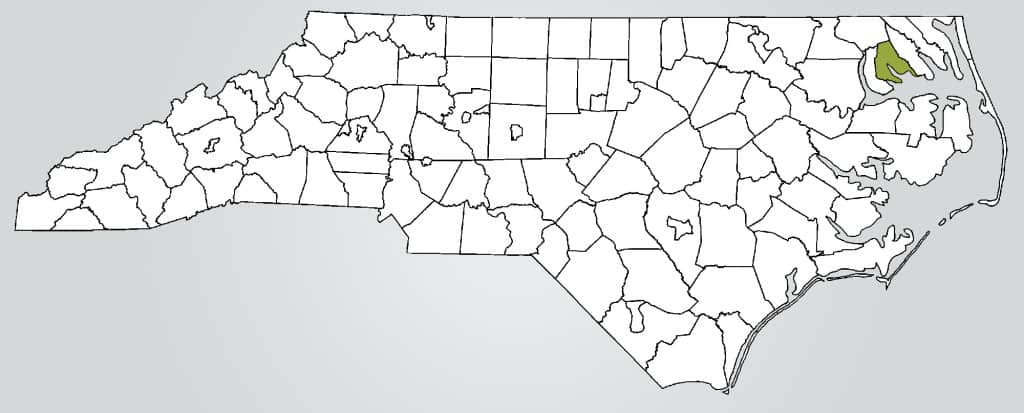

By 2014, in the USA, 260 YouthBuild programs were operating in 46 states, Washington, D.C., and the Virgin Islands, engaging almost 10,000 young adults. Internationally, YouthBuild operates in Canada, Mexico, El Salvador, Haiti, The Bahamas, Panama, Brazil, Peru, Iraq, Serbia, Bosnia, Bulgaria, Romania, Israel, and South Africa, operating over 100 local programs engaging another 6,000 young people.
River City YouthBuild is based in nearby Elizabeth City, where it has been led by Executive Director Lenora Jarvis-Mackey since it started in 1999. The primary components of YouthBuild’s programming are a GED program and job development and training. But Program Manager Angie Wills put it best when she said,
“This is a youth transformation program.”
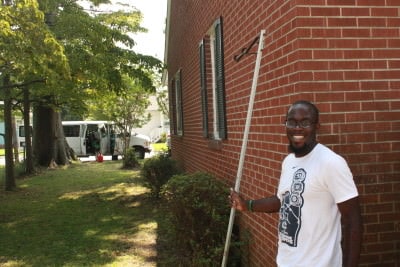

Jeffrey Smith is one example of that transformation.
When EdNC’s CEO Mebane Rash met Jeffrey last year, he said, “I was headed toward a life of nothingness. I acted out of character to please others in a world ruled by drugs. Now I am learning to take charge and lead the community that we love.”
“I ran into some unexpected obstacles,” Jeffrey said to me. “At 23, I finally decided I had no prior involvement in my community. I was kind of wandering without a cause. I came to YouthBuild because I heard that you could receive a trade and I wanted to do that. I wanted to go into construction.”
He spoke about the importance of support from other participants. “It’s a community within a community. You can go to those people. The fellow classmates they relate to you. You can encourage them and they can in turn encourage you and keep you on the right track.”
Now Jeffrey is giving back to the organization that helped him grow, as an Americorps VISTA employee with YouthBuild.
“As baby boomers and our parents’ generation gets older, someone has to step up and assume some responsibilities,” he said.
During my visit to Hertford, Ms. Wills and Pat Hollingsworth, one of two GED teachers for YouthBuild participants, went to several of the sites to see the work that was being done.
YouthBuild participants and staff and other volunteers were hard at work repairing houses –,painting, building a porch, clearing an overgrown lawn.
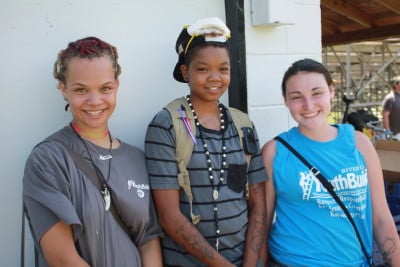

I spoke with three current participants in YouthBuild who were helping clean up the local football stadium – Myazah, Keyanna, and Tiffany. They came from different circumstances, but were united by a desire to obtain a GED and turn their lives in a new direction.
They described working in the community, including tending three community gardens and growing fresh produce. I recalled Ms. Wills describing the relationship with Elizabeth City and community partners and the importance of cultivating the unique community service focus of YouthBuild’s work, as well as the role YouthBuild plays in building community in town.
She said,
“If you live in this community, you are a stakeholder. Because when our young people become better, our community becomes better.”
Asked about their plans for the future, the YouthBuild participants described big goals they were working towards. Myazah said, “I hope to get my GED, then go to college and get my degree–a few degrees actually–business and fashion and prelaw and art.”
Keyanna wants to grow in the trade she’s already learning. “I’m going to get my GED and I want to go to the national guard after that,” she said. “Then I want to go to college and continue working on construction.”
Tiffany said, “Once I get my GED I want to go to college to get my medical transcriptionist license. After I get that I’m going to go back to college to become a medical social worker.”
As she drove me back from the sites, Ms. Hollingsworth described the import of YouthBuild with a story:
“The story goes there was an old man walking along the beach one day, and he was picking up starfish. And there were thousands of them that had been beached somehow, and he was taking each one and throwing them back in the ocean, walking away, picking another, and throwing them back. And he kept doing that and this young man was watching him. And he finally went up to the old man, and he said ‘there are thousands of starfish, you can’t save them all!’ And the old man said, ‘no, but I can save them one at a time.’
And that is what YouthBuild is all about – saving them one at a time.”
This visit was, in a way, a kind of homecoming for me. Having spent my first seven years in Elizabeth City, I was eager to see firsthand what this organization was doing to help northeastern North Carolina. I was amazed. This organization is changing the lives of our youth.
Driving back, I reflected on the philosophy Angie Wills, the Program Manager for YouthBuild, introduced me to earlier in the day. She recited it from memory:
“As a community, we are engaged in a united struggle to overcome the social, political, economic, educational, and spiritual inequities, which threaten to destroy us as a people.
We recognize that, as young people, we are one of the greatest resources available to the survival of the community.
Therefore, we stand ready and willing and hereby pledge our commitment: to rebuild and improve the quality of life in our community through collective work and responsibility and cooperative economics; to educate, elevate and raise the consciousness of ourselves and others along the way; to develop our potential as leaders and positive role models so we can proactively pursue justice, equality and peace for all.
All this we do with appreciation, love, dignity, respect and faith that the collective will of the community is the greatest force conceivable.”
Imagine if all of us in North Carolina woke up each morning with faith in that vision, ready to make it a reality. We would change the course of our state for ourselves and our children.
